Toyota Proace City van review (2023)
Parkers Best Small Van 2023 winner combines comfort and practicality with a long warranty
PROS
- Compact dimensions, large inside
- Impressive payload
- Up to 10-year warranty
- Comfy and easy to drive
- Well-equipped as standard
CONS
- No auto or six-speed gearbox
- Fiddly controls
- Doesn’t get best tech from sister vans
- Laggy infotainment system
- Poor ventilation controls
Summary
The Toyota Proace City is winner of the Parkers Small Van of The Year award in 2021, 2022 and 2023. Launched in 2020, like the larger Proace medium van, the Proace City small van is a rebadged version of a Stellantis model – in this case, it’s a Citroen Berlingo / Peugeot Partner / Vauxhall Combo Cargo, now wearing a Toyota nose.
Identical beneath the branding, these four excellent small vans offer a comfortable driving experience, plenty of choice, and class-leading payload, and were joint winners of the 2021 Best Small Van award here at Parkers. However, Toyota now offers the Proace City with up to 10 years of warranty coverage, making it the clear choice to win the Best Small Van award on its own in both 2022 and 2023.
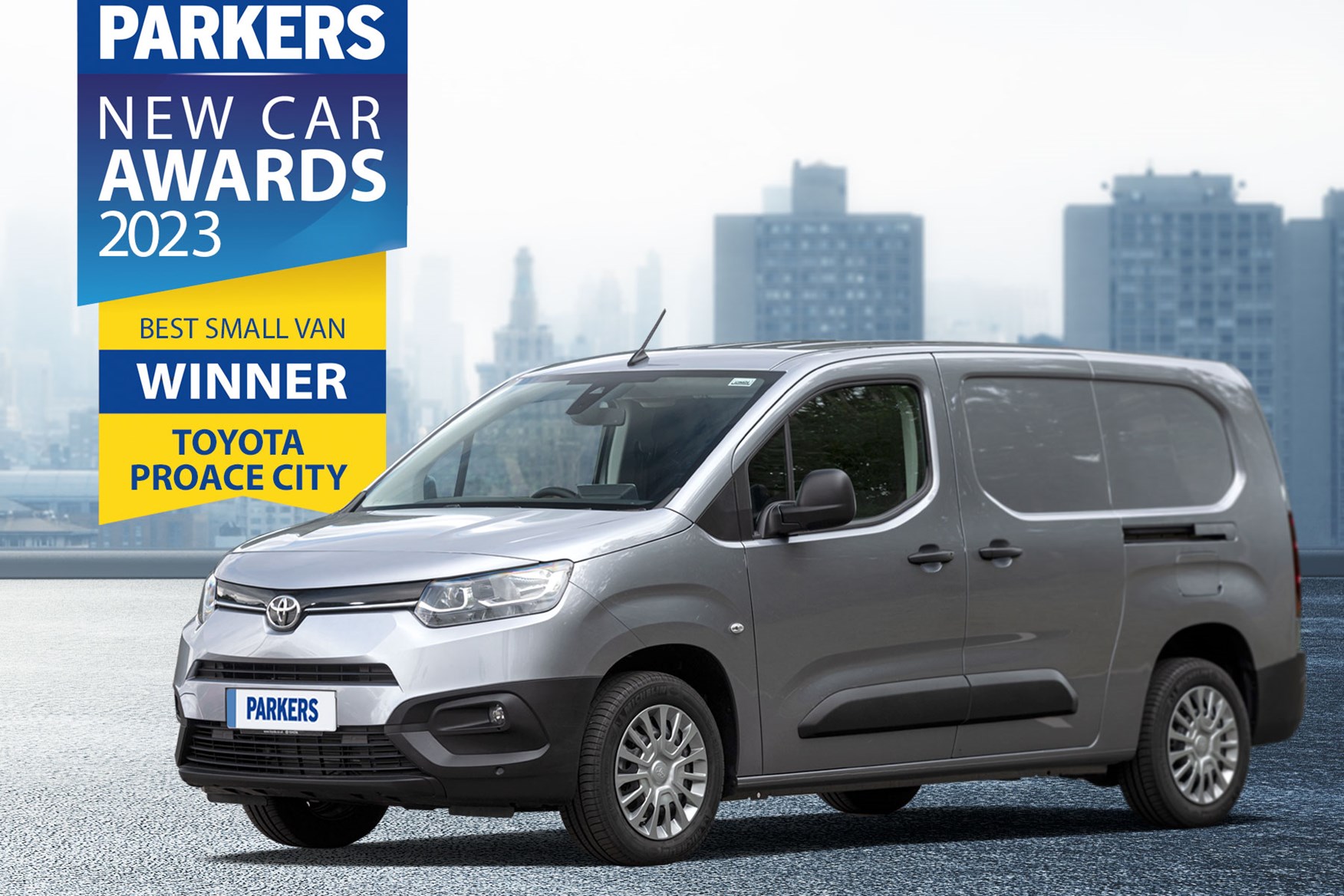
What's more, while Toyota already offered a better ownership package, with better predicted used values and a superior warranty, a range update in September 2021 adding a third trim level with additional safety equipment further confirms the Proace City as a stand-out choice.
Toyota Proace City upgrades from 2021
The Proace City launched with a choice of just two trim levels, Active and Icon, and with a small engine range consisting of 75hp and 100hp of the same 1.5-litre turbodiesel. And though you could get L1 and L2 bodysizes - L2 being the long-wheelbase version - this was still a much reduced range compared with the Stellantis family it shares all its major components with.
In September 2021, this situation improved, with the addition of a range-topping Design specification (which features additional safety equipment, one of the few standard equipment weak points of the previous line-up).
At the same time, Toyota announced it would stop selling the 75hp version. The 100hp model carries on, with a more powerful 130hp 1.5-litre variant joining the line-up in 2022.
Practical considerations
The soon-to-be-removed entry-level 75hp model is aimed at those with less demanding needs – it’s slow, and not entirely up to the task of propelling a fully laden van at motorway speeds, even though it also gets a reduced 650kg payload.
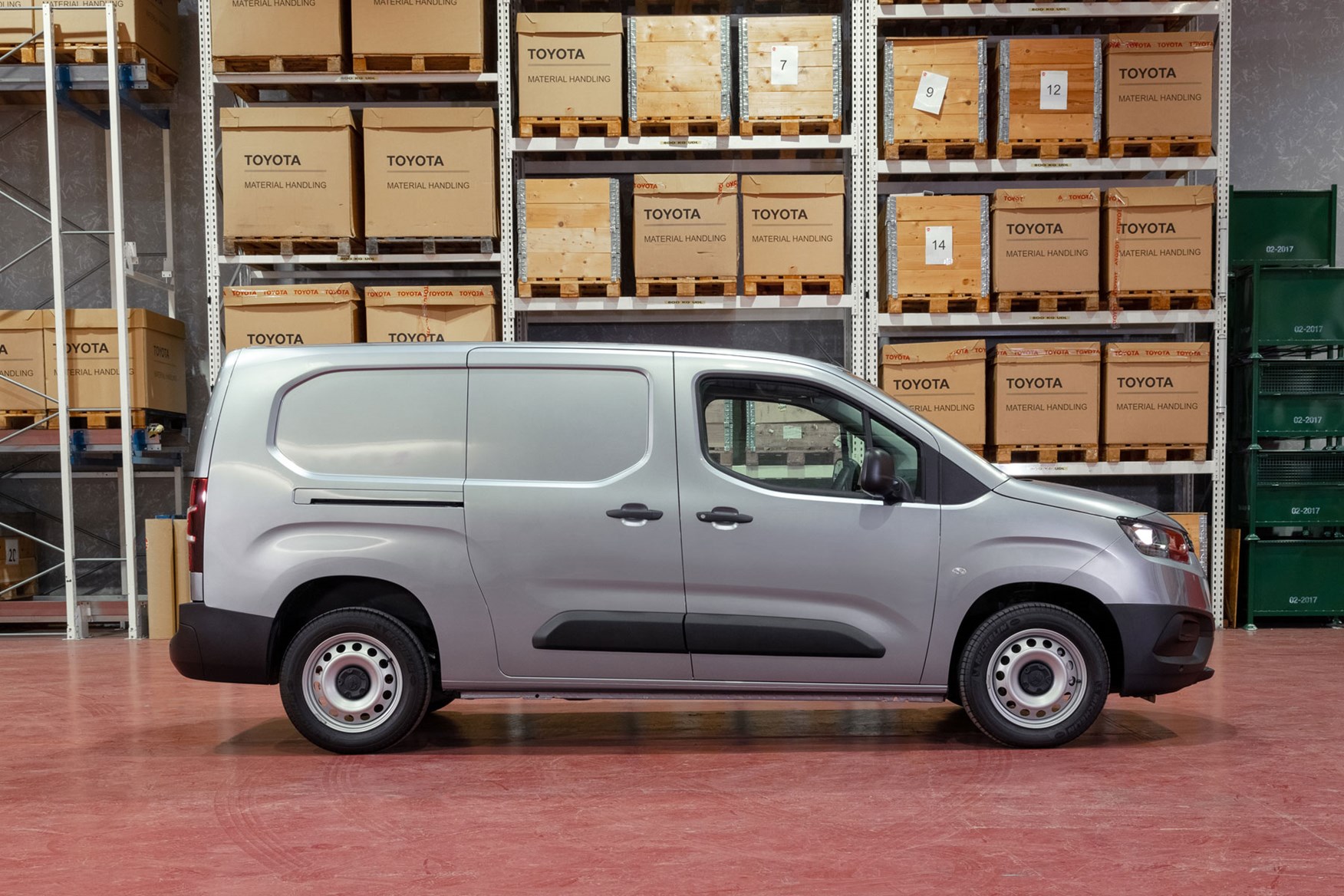
For those reasons the 100hp model is by far the best bet, gaining the class-leading 1,000kg payload (950kg in LWB form) as well as significantly more flexibility on faster roads. That’s probably why Toyota expects 90% of buyers to opt for it. It’s also rated for towing up to 1,500kg – again, class-leading.
Appealing ownership package
Recently rebranded as Toyota Professional, this new commercial vehicles arm brandishes three impressive promises all aimed at keeping small business owners sweet.
The first, like Toyota’s passenger cars, is up to 10 years of warranty coverage – a useful thing to have, especially when its sister vans offer only three years of cover.
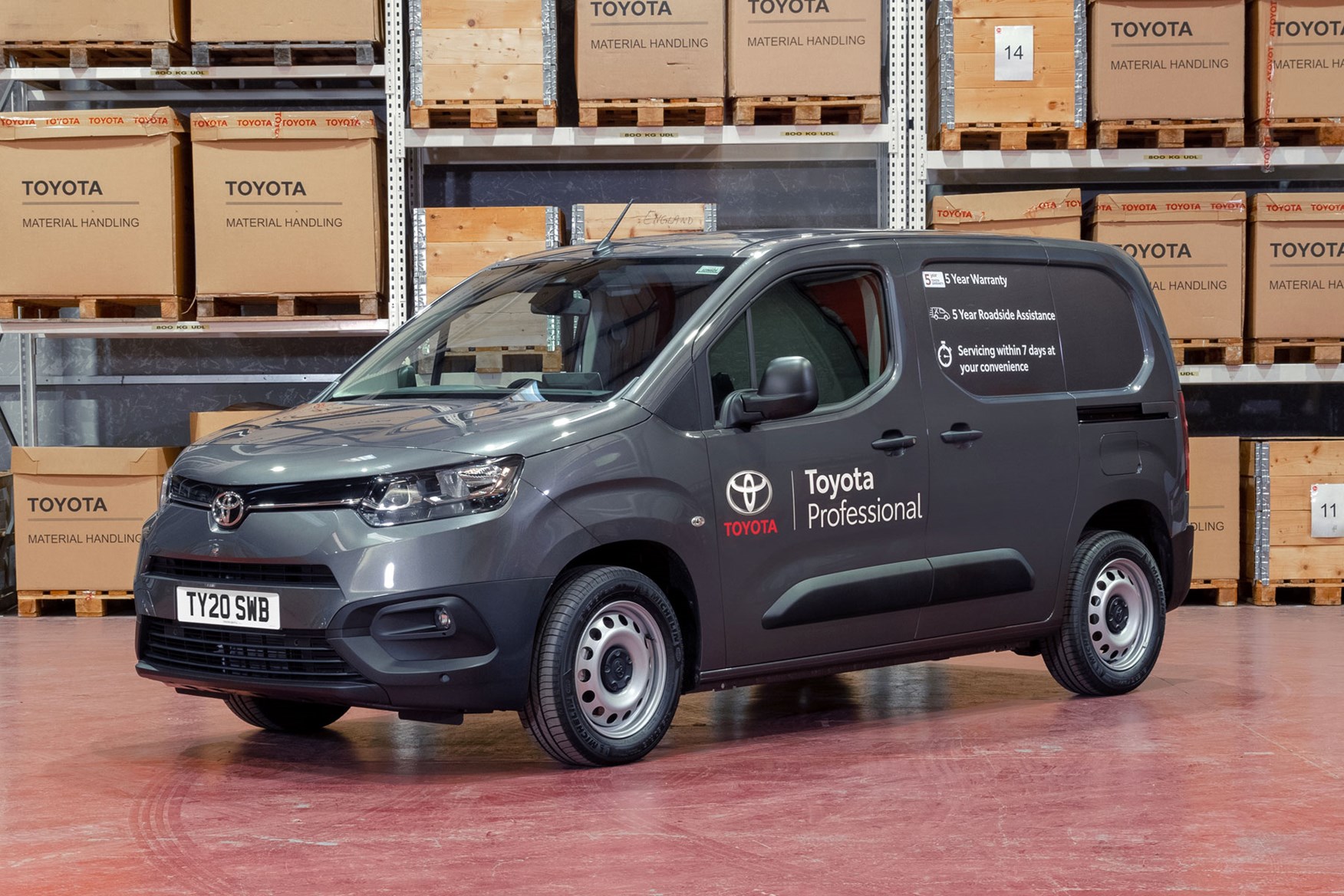
There’s also five years of free roadside assistance, and a promise that if you need it, you’ll get an appointment at a Toyota service centre within seven days of asking – or your bill will be half-price.
As further proof of its commitment to the LCV sector, there are now 143 dealers across the country certified to work with Toyota Professional products – up from less than 30 a few years ago.
Toyota Proace City Electric van
The Proace City is now available as electric van, which we've covered extensively in our separate Toyota Proace City Electric review.
Verdict: is the Toyota Proace City van any good?
The Proace City is a Citroen Berlingo / Peugeot Partner / Vauxhall Combo Cargo with a reduced model range and a longer warranty. It really doesn’t get much simpler than that, does it?
These are brilliant small vans (as evidenced by their Parkers Small Van of the Year trophies) with comfortable interiors, plenty of useful tech and bigger payloads than anything else in this class. No, they’re not as much fun to drive as a Ford Transit Connect, but does that really matter?
If the ownership proposition is appealing – and for those who anticipate keeping their vans for a while, we suspect it will be – the Proace City is a great option.
Skip to our full verdict on...
- Reduced engine range compared with sister vans
- Still comfortable and refined to drive
- Lack of six-speed gearbox is a shame
It’s perhaps not entirely unexpected that the Proace City is very similar to its sister vans when it comes to the driving experience. In fact, it’s identical, as Toyota doesn’t make any mechanical changes.
The differences are in the engine range – Toyota only offers two engines to Peugeot, Citroen and Vauxhall’s four.
They’re both variations of the same Stellantis 1.5-litre diesel engine, which is also used by a number of passenger cars. As such, we rate it very highly for its responsiveness and particularly its refinement – it’s very quiet at a cruise, near-silent at idle and has a good spread of power across its rev range.
Engines and gearboxes
Easy to digest, here – there’s just two. There was a 75hp version when it first launched, but this was removed from the range. With reduced torque and power, plus a lower payload, it’s easy to see why most will want to opt for the more powerful engine. However for used buyers after the lowest possible cost of purchase or perhaps without particularly weighty needs, it should do the job just fine.
- BlueHDi 100: 1.5-litre, 100hp @ 3,500rpm / 250Nm @ 1,750rpm
- BlueHDi 130: 1.5-litre, 130hp @ 3,500rpm / 250Nm @ 1,750rpm
The 100hp engine, meanwhile, has enough power for comfortable motorway cruising and getting away from the lights without being tardy. It’s very smooth and will suit the vast majority of buyers just fine. In 2022, the 130hp engine joined the range and brought greater flexibility and increased torque.
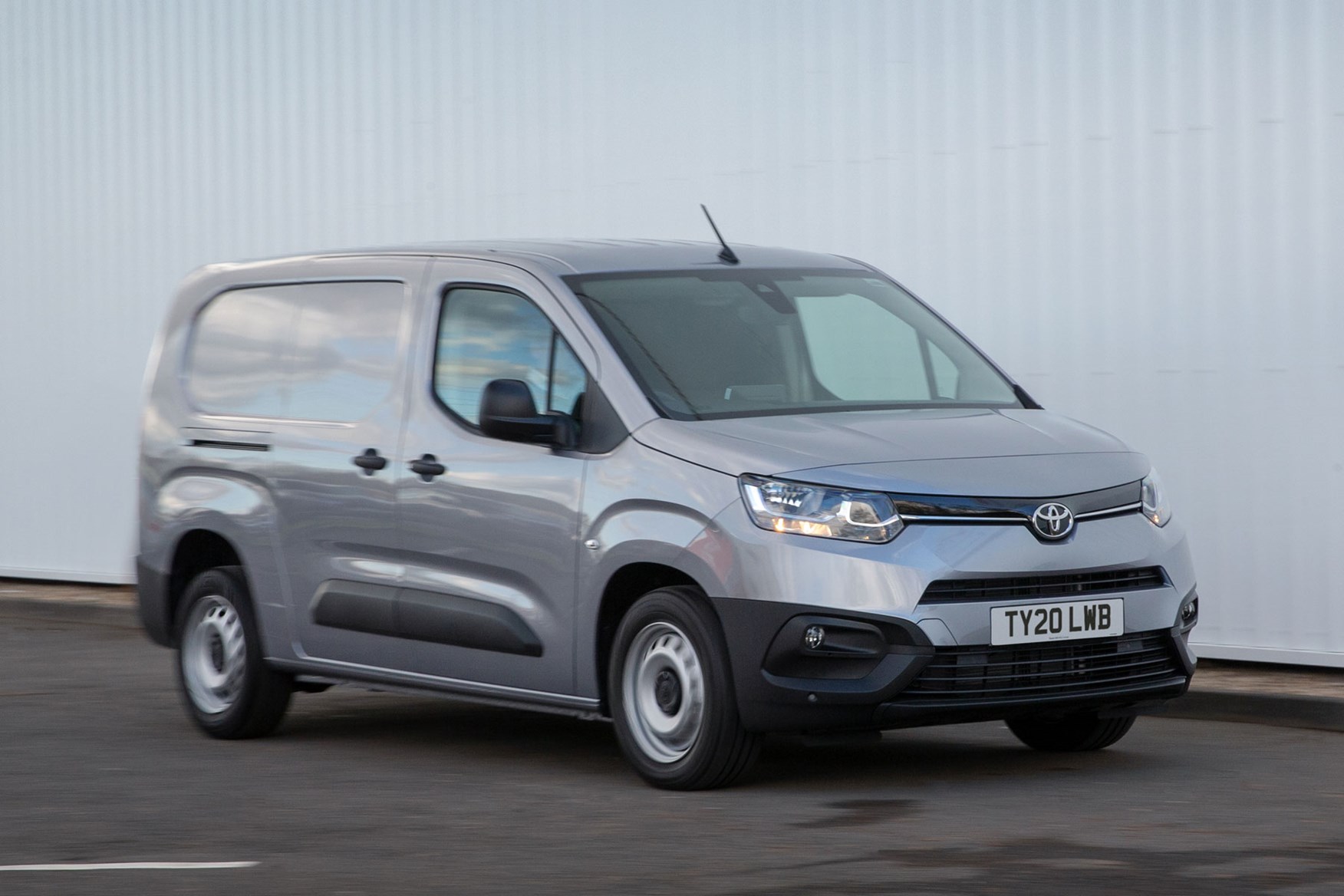
Both engines are paired to the same six-speed manual gearbox. You’ll find this transmission in the Stellantis trio, too, and it’s, well, it’s a good setup, with tight-feeling ratios.
Stellantis also offers a 1.2-litre petrol that won’t be coming to the Proace City line-up, which could have been an interesting alternative for the anti-diesel brigade. Given Toyota’s nearly completely eliminated diesel from its passenger cars, this seems an odd omission, although the all-electric version steps into that place.
How does it handle?
The Proace City drives identically to its sister vans. What that means really is that they’re comfortable, easily manoeuvrable and pretty tidy in the corners, but they lack the last degree of on-road finesse provided by the Ford Transit Connect.
The Proace City gains the sensible, full-sized steering wheel shared with the Berlingo and Combo Cargo, rather than the truncated unit from the Peugeot Partner. It takes away some of the steering’s immediacy but it’s still responsive – we can’t imagine drivers will have many complaints about how this van handles, though some would probably prefer a bit more weight to the wheel.
Is it comfortable?
Very. Inheriting car-like underpinnings means the Proace City rides well over bumps and imperfections. Small wheels and chunky sidewalls also help with this, as do good seats. The driver’s seat in particular is very comfortable, and adjusts to make room for even the burliest of drivers.
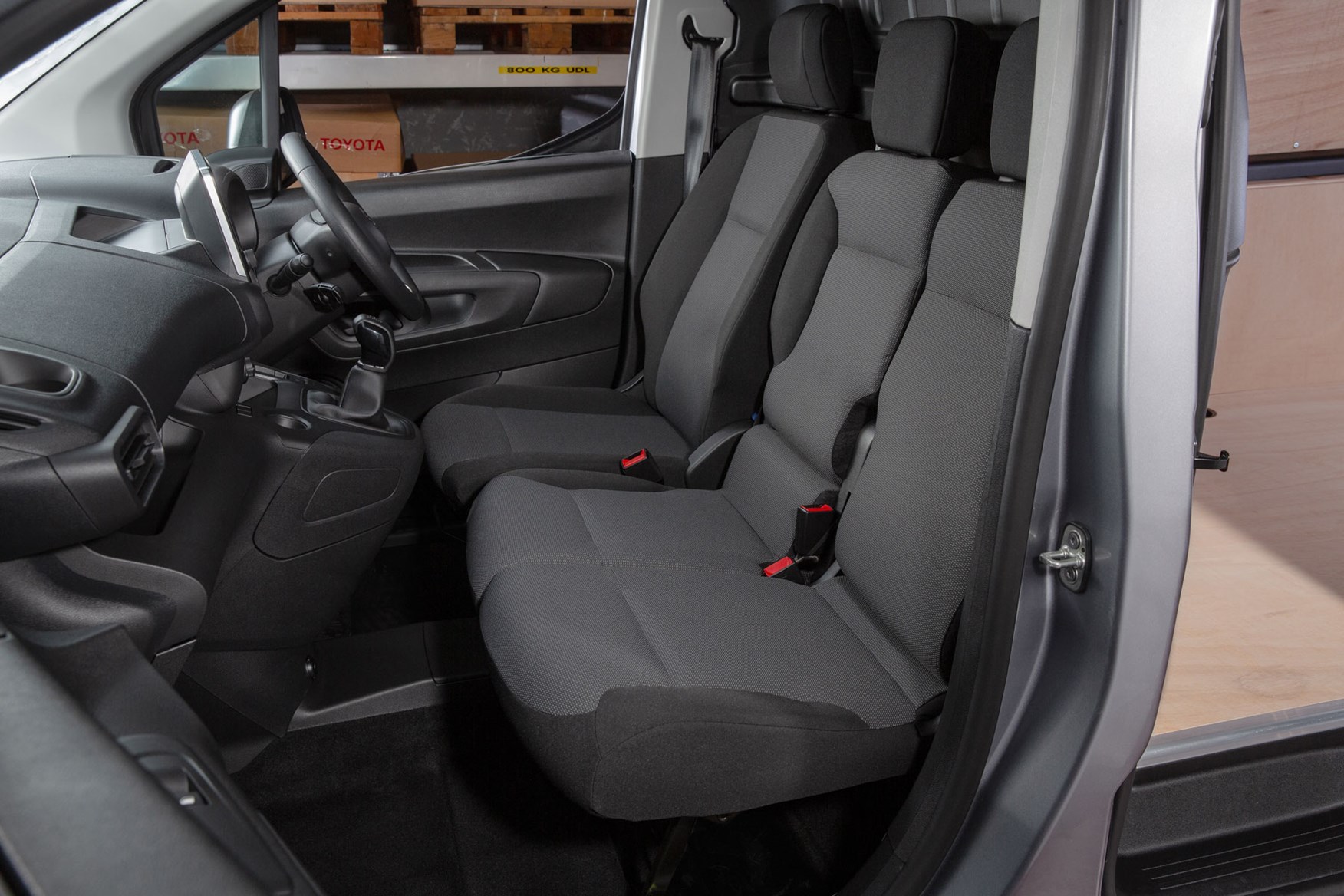
The same can’t be said of the optional double passenger seat, which really only has space for two on the very shortest of trips. However, one person can stretch out comfortably, and the lack of a central tunnel means they can also slide over to get out of either door.
Sound deadening is also excellent for a van. The engines do get vocal at high revs, and become noticeable in the cab, but most of the time it’s very quiet.
- Simple dashboard with easy operation
- Some controls difficult to find at night
- Lots of cabin storage
The Proace City uses the same cabin as the Citroen Berlingo, eschewing the high-set dials and truncated steering wheel of the Peugeot Partner. There are only a few very minor differences, such as Toyota-specific fonts for the gauges and infotainment system.
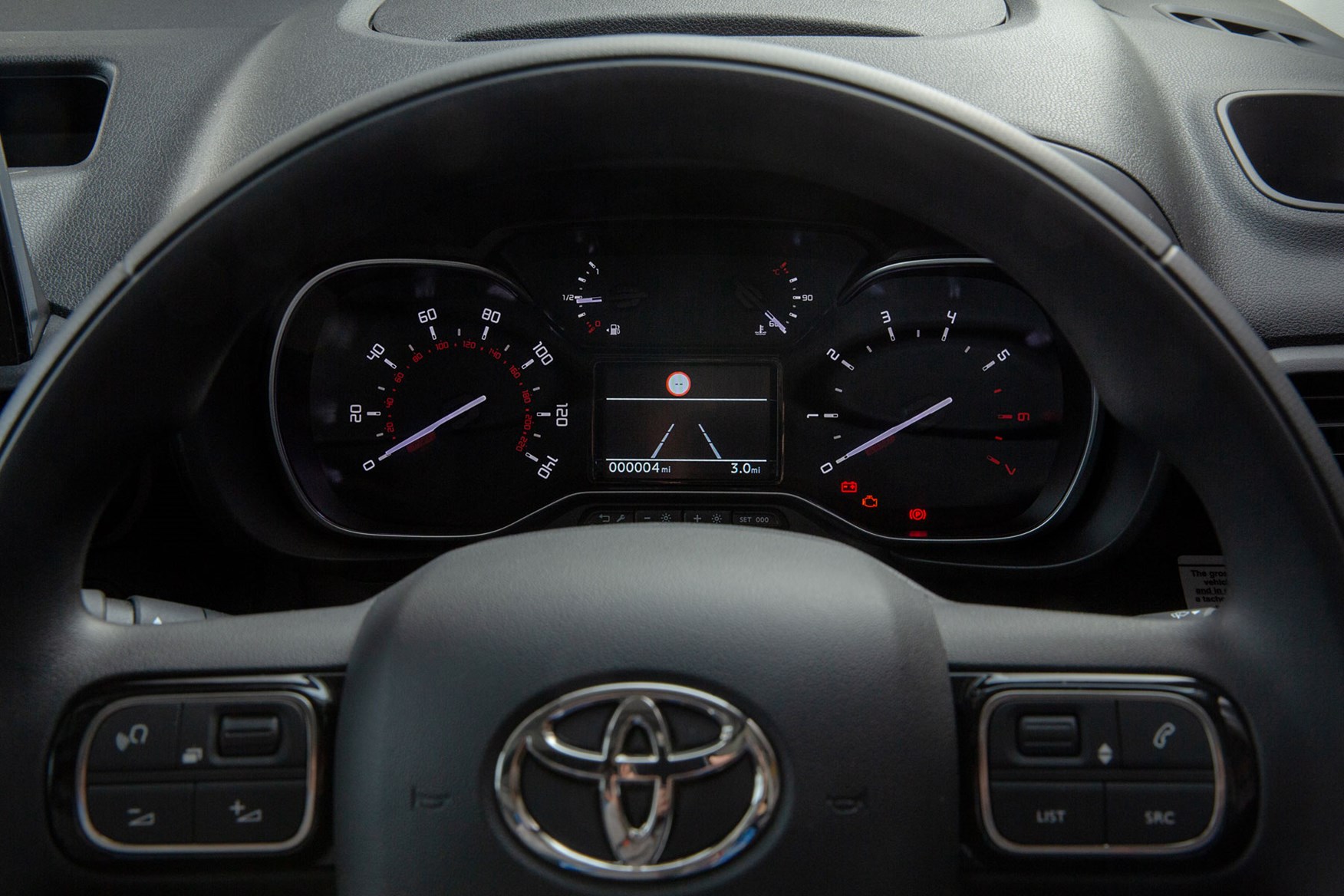
That means you get the same easy-to-read gauge cluster and infotainment screen, the latter of which is set high up on the dashboard and slightly angled towards the driver for easier operation on the move. The gearlever is also high-set in a pod just below that infotainment screen, which unfortunately places the (unlit) air-conditioning controls in their own rather dark cavern.
There are a few other control oddities, too, from the track skip function on the wheel which works the reverse way from what you’d expect, to the oddly-proportioned cruise control stalk that sprouts out of the steering column at just the right angle to be completely obscured by the wheel.

There are plenty of positives, though. An electronic handbrake frees up floorspace in three-seat models, so you don’t need to reach down to operate it. There’s also lots of storage.
Plenty of in-cab storage
There’s a large glovebox on top of the dash and a shelf below it, large enough to accommodate a smartphone – although you may wish to line it with some form of non-slip material if you don’t want everything sliding around.
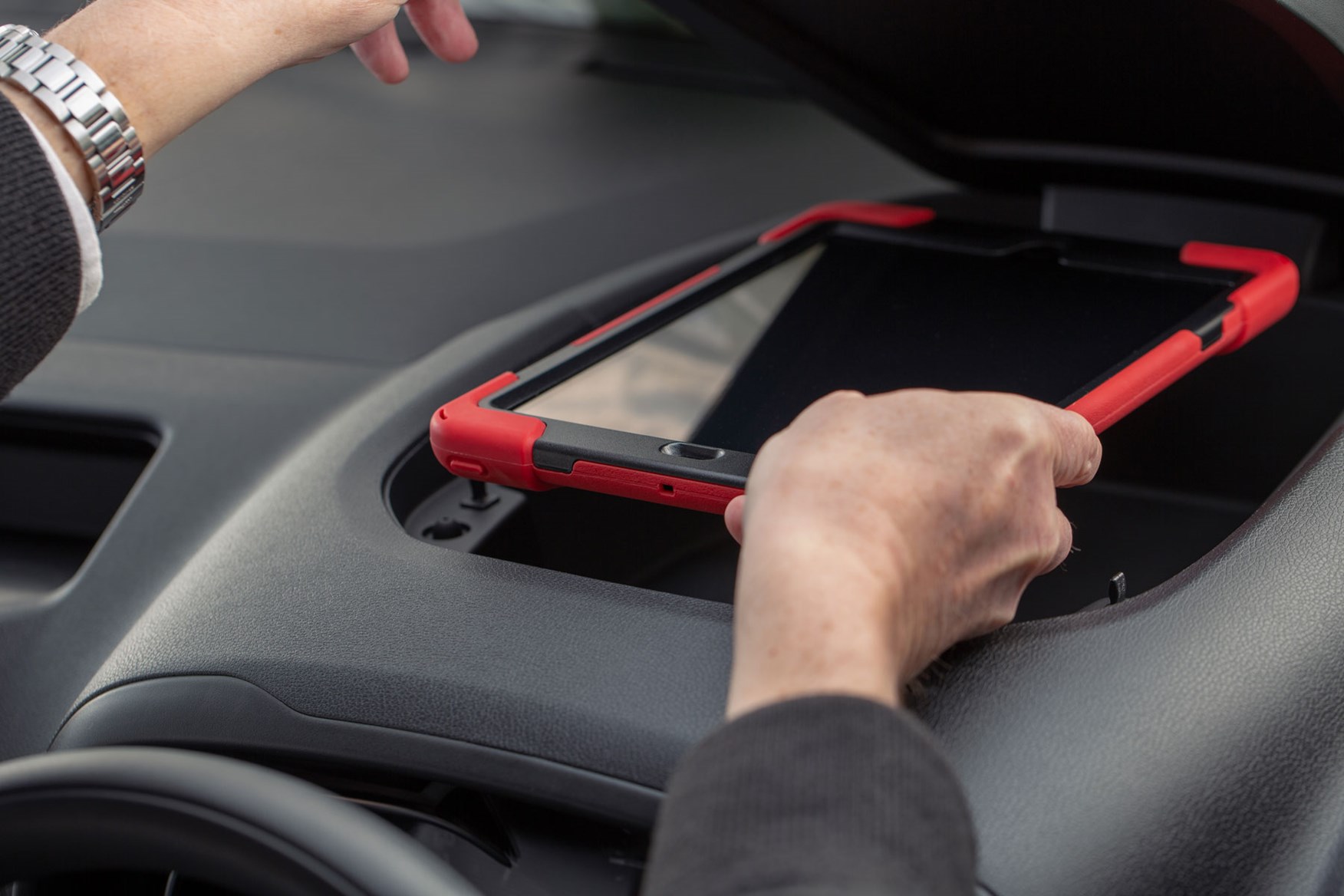
There’s also an uncovered cubby hole underneath that – on left-hand drive models, this is a glovebox, but the French PSA Group that manufactures this van doesn’t re-site the fuse box when switching over, so it takes up space there instead.
Atop the dashboard there’s a tray behind the infotainment screen ideal for keeping your phone when it’s plugged in and a large, covered cubby just behind the steering wheel. Door bins are a good size, too, and there’s a cupholder on either end of the dash top.
Infotainment
Entry-grade Proace City Active models get a basic radio unit, though it does still include DAB and Bluetooth. The top grade Icon versions, which are expected to be more popular, get a large 8.0-inch touchscreen that sits atop the dashboard angled slightly towards the driver, complete with Apple CarPlay and Android Auto connectivity.
It’s easy to see and the interface largely makes sense – as with any of these systems, a few functions are tucked away where you wouldn’t expect, but that’s the sort of thing that doesn’t take long to get used to.
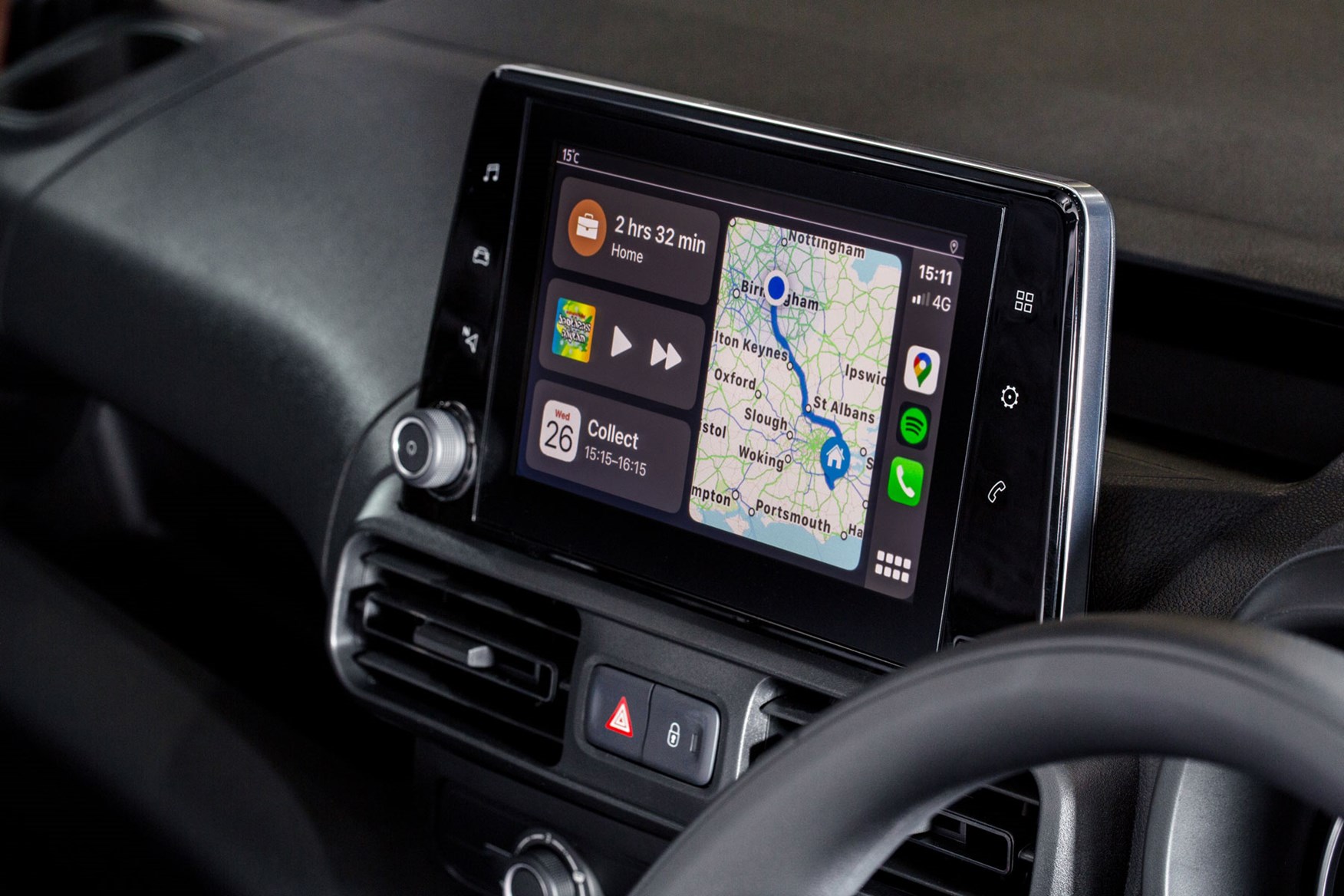
It’s not as slick as the system in a Volkswagen Caddy, though we’d put it on par with that of the Ford Transit Connect.
It is a pain trying to select certain items on the screen, though, especially when bouncing around over rough roads.
It also displays the feed from the parking sensors (all-round) and reversing camera. This isn’t the highest resolution but it’s plenty for parking, though it is a shame that Toyota won’t offer the clever rear-view driving camera that others in the family do.
- Most popular Proace City expected to be the most expensive
- Plenty of standard kit
- Class-leading residuals claimed
The Proace Verso should, if anything, prove even cheaper to run than its sister vans. That’s not due to its fuel economy or reliability, which are likely to be identical, but its ownership experience and residual values, which Toyota reckons will be above any competitor product. That means good resale value and, more importantly, competitive lease and financing offers.
Toyota Proace City mpg
All Proace City models meet Euro 6 emissions standards, and should return excellent fuel economy. Claimed figures are as follows:
- BlueHDi 75: 45.6-51.4mpg / 112-116g/km CO2
- BlueHDi 100: 46.1-52.3mpg / 113-116g/km CO2
All the diesels require AdBlue, and are fitted with a 17-litre tank for this (quite a generous size, especially for such a small van, so should go quite far between fill ups).
Toyota Proace City warranty
Until 1 June 2021, all Proace City models came with a highly impressive five-year, 100,000 mile warranty – the same mileage cover as its sister vans, but with two years of extra coverage.
From 1 June 2021, the Proace City switched to the new Toyota Relax warranty scheme, which covers the van for up to 10 years or 100,000 miles; basic cover is for three years / 60,000 miles, but as long as you continue to go to Toyota for servicing, additional warranty coverage keeps getting added until you reach that 10-year limit.
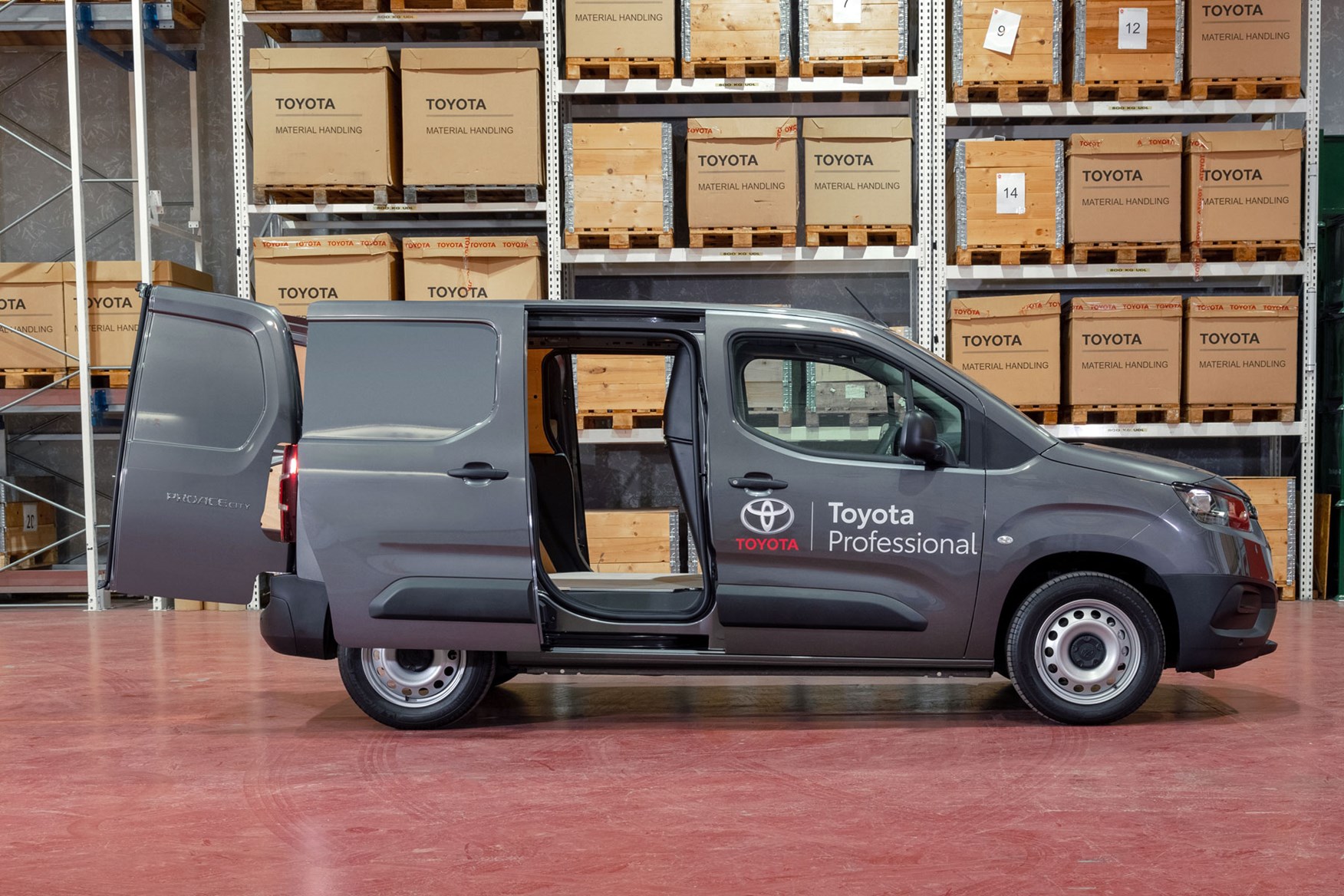
It’s an identical warranty to Toyota’s passenger cars, and is very reassuring – it suggests the brand’s confident either that this van will prove very reliable, or that it’s capable of fixing it quickly and cost-effectively.
Full details of the Toyota Relax warranty can be found in our guide.
Toyota Proace City service intervals
Service intervals are variable, but typically come every two years or 25,000 miles. Toyota has recently expanded its service centres to 143 locations across the country. More reassuring still, owners are promised a service or repair appointment within a week – or it’s half price.
Toyota Proace City trim levels and equipment
At launch there were just two trim levels, named Active and Icon. Then in September 2021, Toyota added the Design model as a range-topper.
Toyota Proace City Active standard equipment highlights:
- Twin sliding doors
- Full-height bulkhead
- Manual air-conditioning
- Automatic headlights
- DAB and Bluetooth connectivity
- Steel wheels
- Electrically heated and adjustable wing mirrors
Toyota Proace City Icon standard equipment highlights (in addition to Active):
- 8.0-inch infotainment touchscreen with Apple CarPlay and Android Auto
- Smart Cargo (twin passenger seat with load-through bulkhead)
- Front and rear parking sensors
- Reversing camera
- Cruise control
- Wheel covers
Toyota Proace City Design standard equipment highlights (in addition to Icon):
- Satellite-navigation
- 16-inch alloy wheel
- Body coloured bumpers
- Alarm
The Design also gets a number of safety features as standard - namely pre-collision assist, lane-departure warning, traffic sign recognition and driver fatigue alert - that were previously only optional on the Icon.
The Stellantis alternatives still have extra high-tech bits and pieces, including built-in load sensors and rear camera systems. But we don't feel the lack of these is a deal-breaker for the Toyota.
Toyota is legendary for the reliability of its vehicles. But (big but) Toyota doesn’t build the Proace City itself. Instead, it’s built by Stellantis on the same production line as the Citroen Berlingo, Peugeot Partner, and Vauxhall Combo Cargo.
This van’s not been around very long but it already has three recalls – all for items that are ‘not correct to specification’. The steering column, handbrake mechanism and passenger seat belt are all affected.
None of these are safety critical recalls, but they are worrying to see on such a new van. On the plus side, Toyota’s dealerships are truly excellent, so any work that needs doing will likely be done in a timely and efficient fashion.
The Proace City should prove a safe vehicle to travel in – the passenger version of the vans it’s based on scored 91% in Adult Occupant Protection and 81% in Child Occupant Protection during Euro NCAP crash testing.
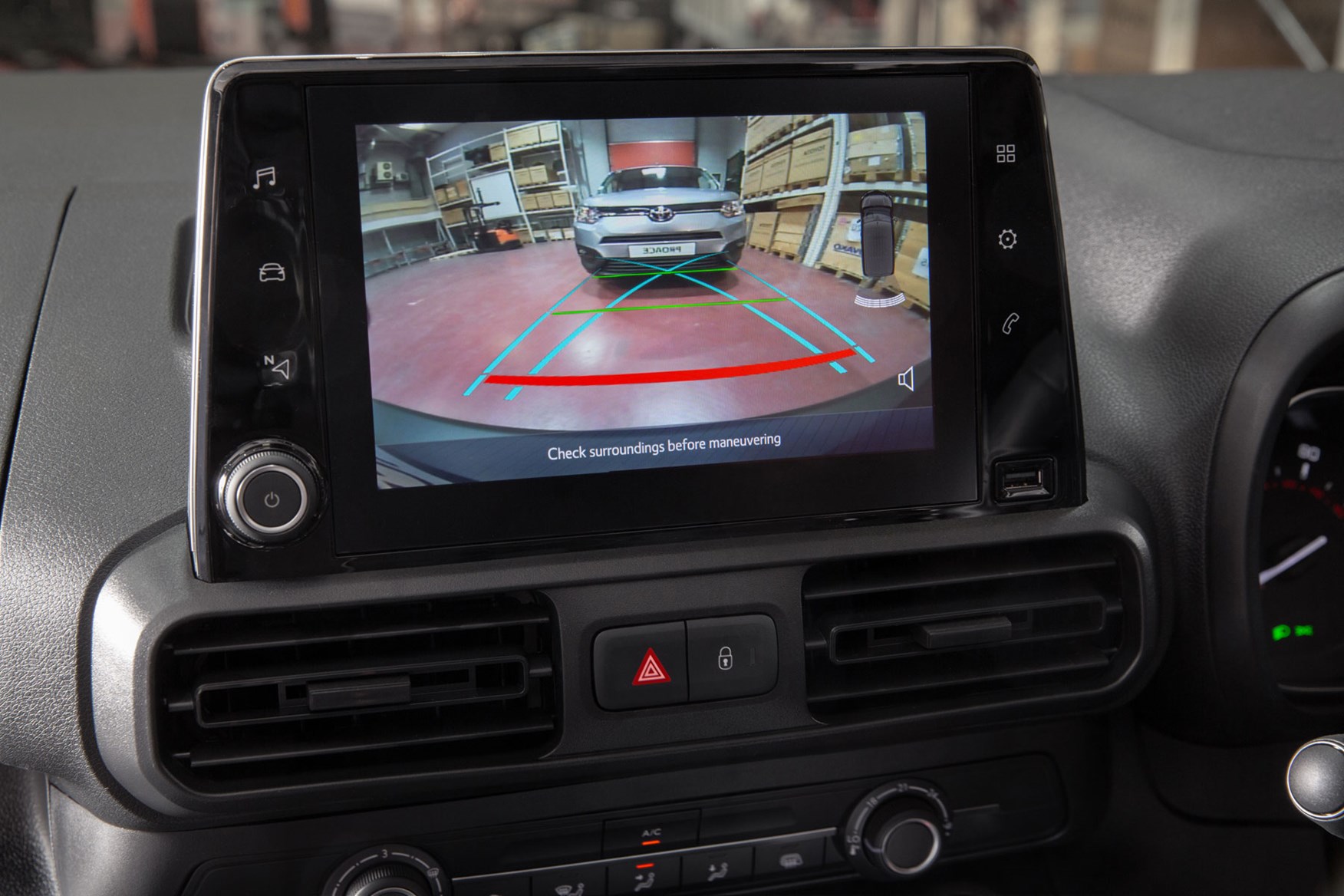
As for safety assistance systems, dependent on spec, you can get:
- Cruise control
- Lane-departure warning
- Driver attention alert
- Coffee break alert
- Traffic sign recognition
- Distance alert
- Autonomous emergency braking
- Cornering lights
- Hill-start assist
- Reversing camera
- Front and rear parking sensors
- Trailer stability control
As for security, an alarm is available as an option on Icon models and is standard on the Design, while the rear door hinges are hidden to make accessing the rear a more difficult job for potential thieves.
Which Toyota Proace City is best for me?
With a limited line-up of trims and engines, choosing a Proace City should be easy.
Best Toyota Proace City for running costs
It’s the more powerful engine that’s actually the most efficient, thanks to that extra power they don’t have to work so hard. For the best running costs, you should opt for the lighter short-wheelbase model and basic trim.
Best Toyota Proace City for payload
Short-wheelbase Proace Cities fitted with the 100hp engine are capable of carrying a class-leading 1,000kg of payload. This is reduced to 950kg for long-wheelbase models, though that’s hardly a big sacrifice.
Best Toyota Proace City for value and standard equipment
Entry-level models are great value given the amount of standard equipment they come with – namely air-conditioning and digital radio, two near-essentials these days.
If it’s a van destined for longer distances, though, or one that’s going to be doing a lot of parking in tight spots, we’d recommend opting for the Icon grade thanks to that infotainment/navigation screen and its parking aid.





























